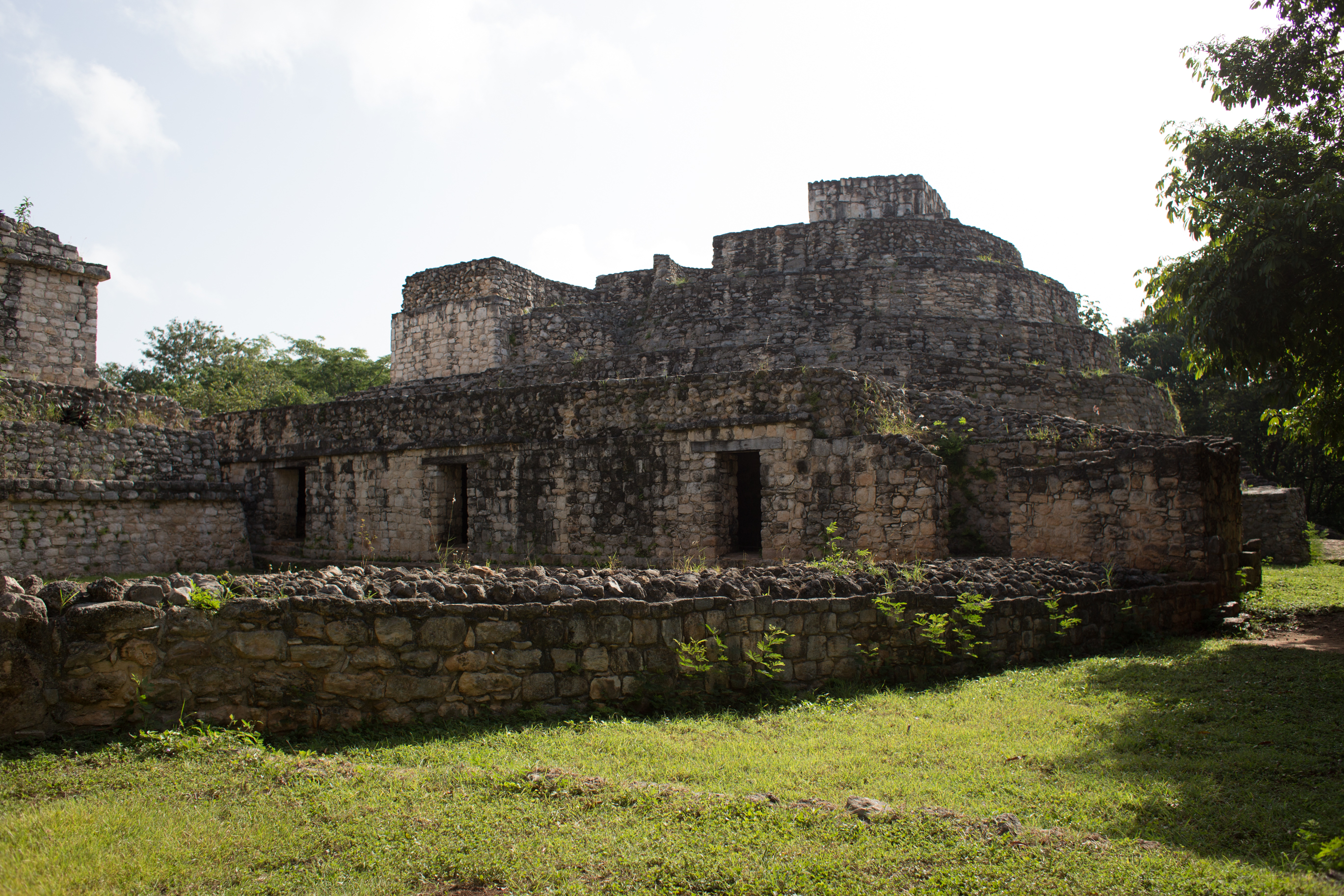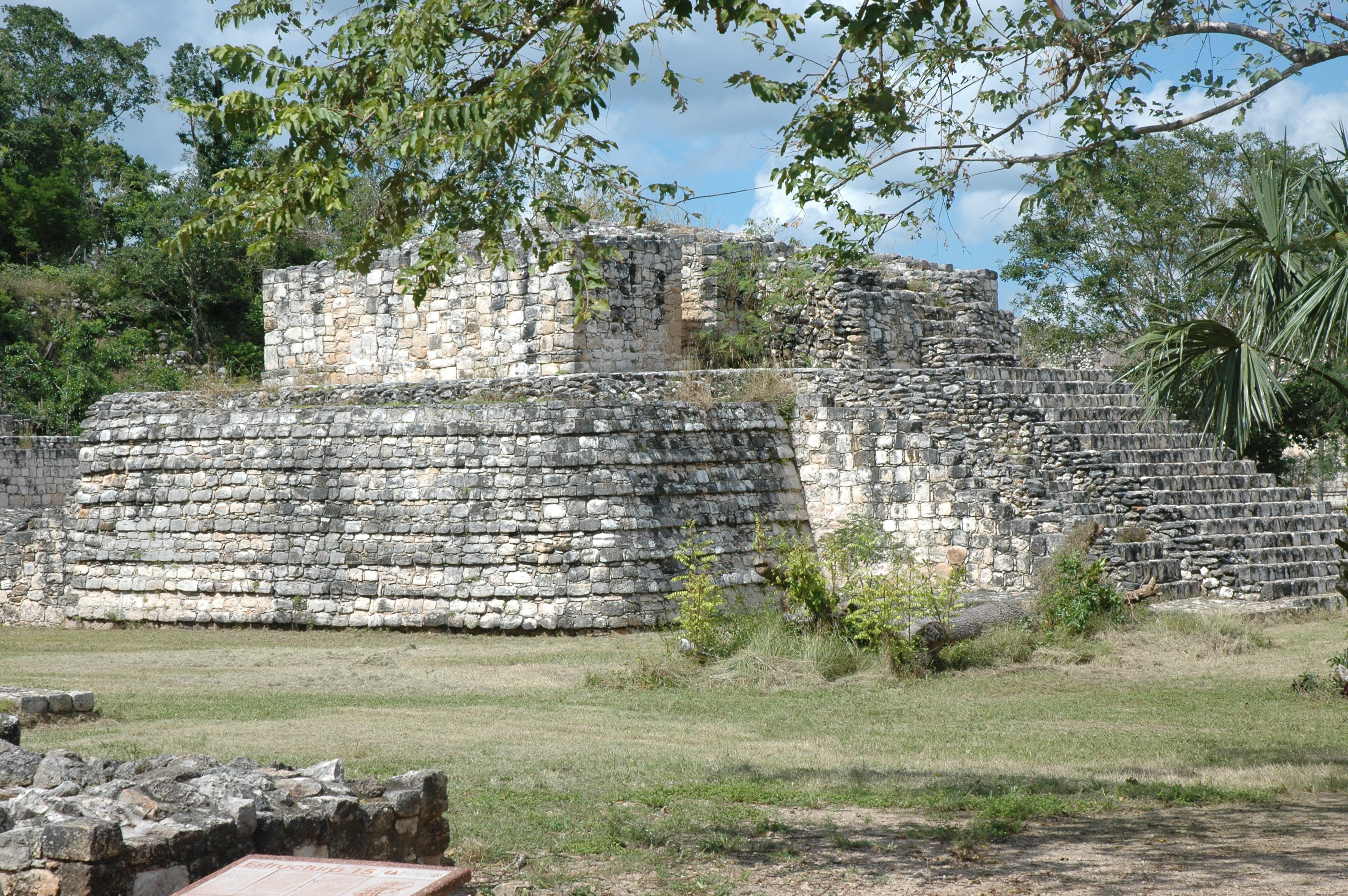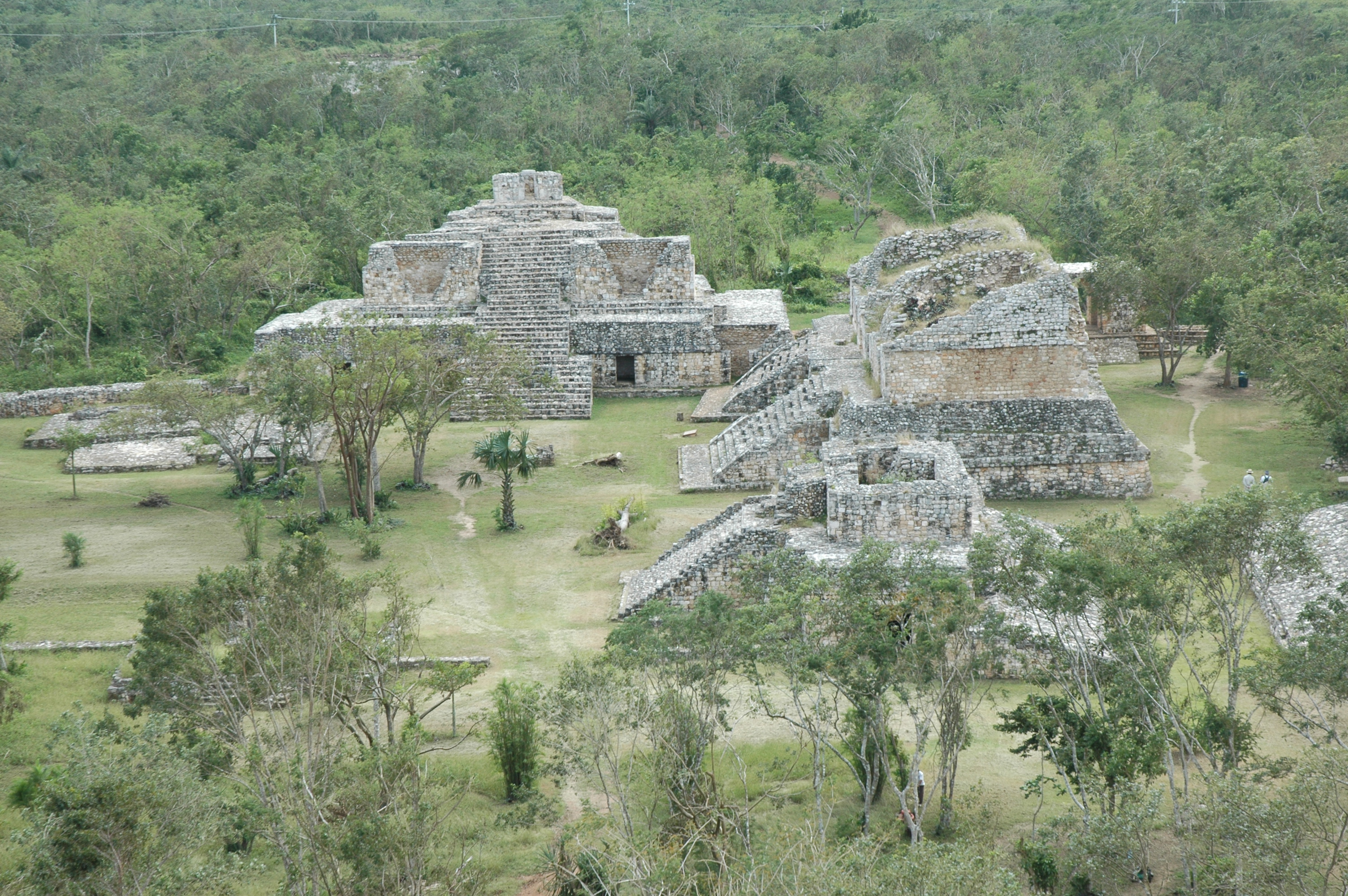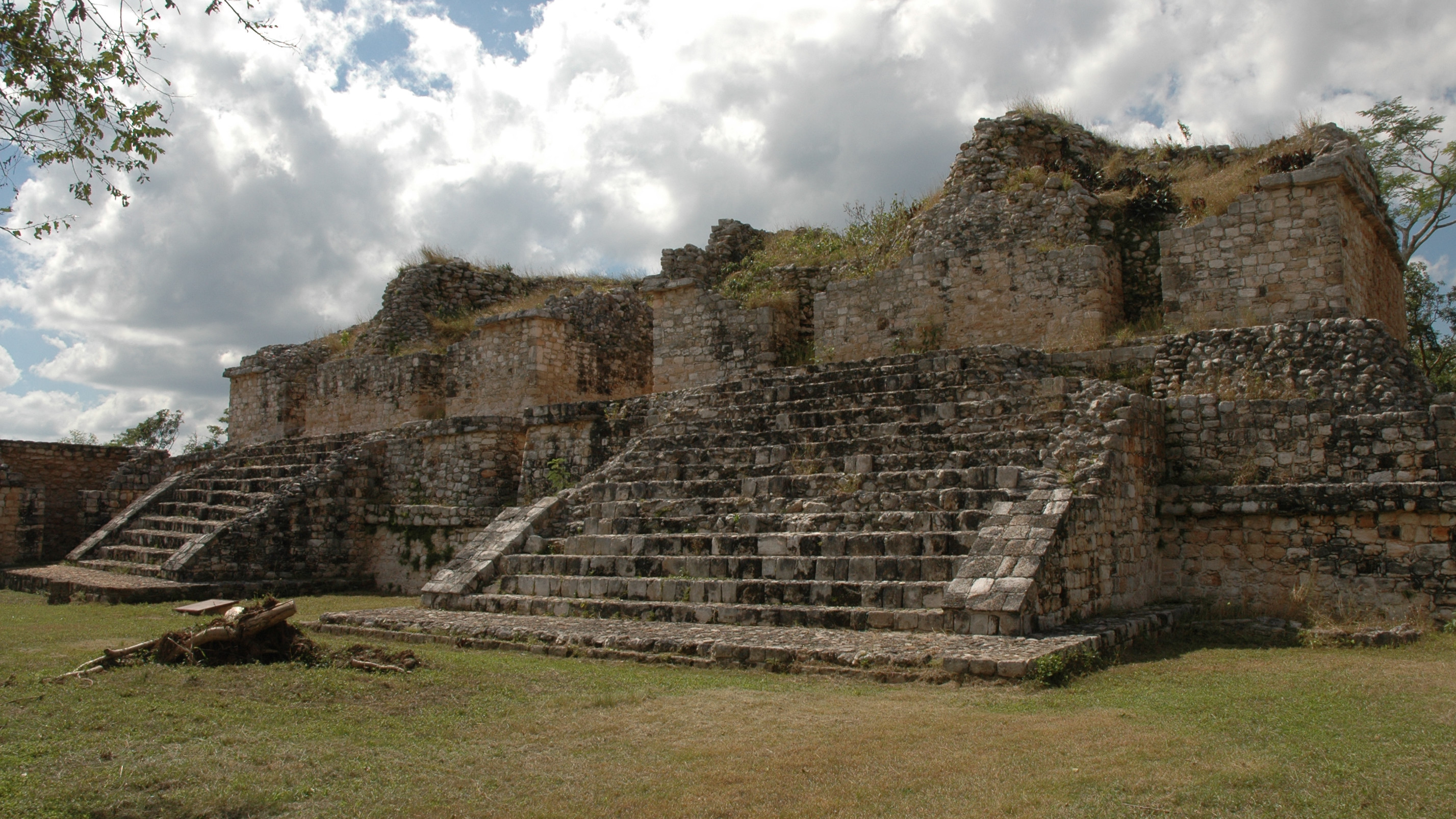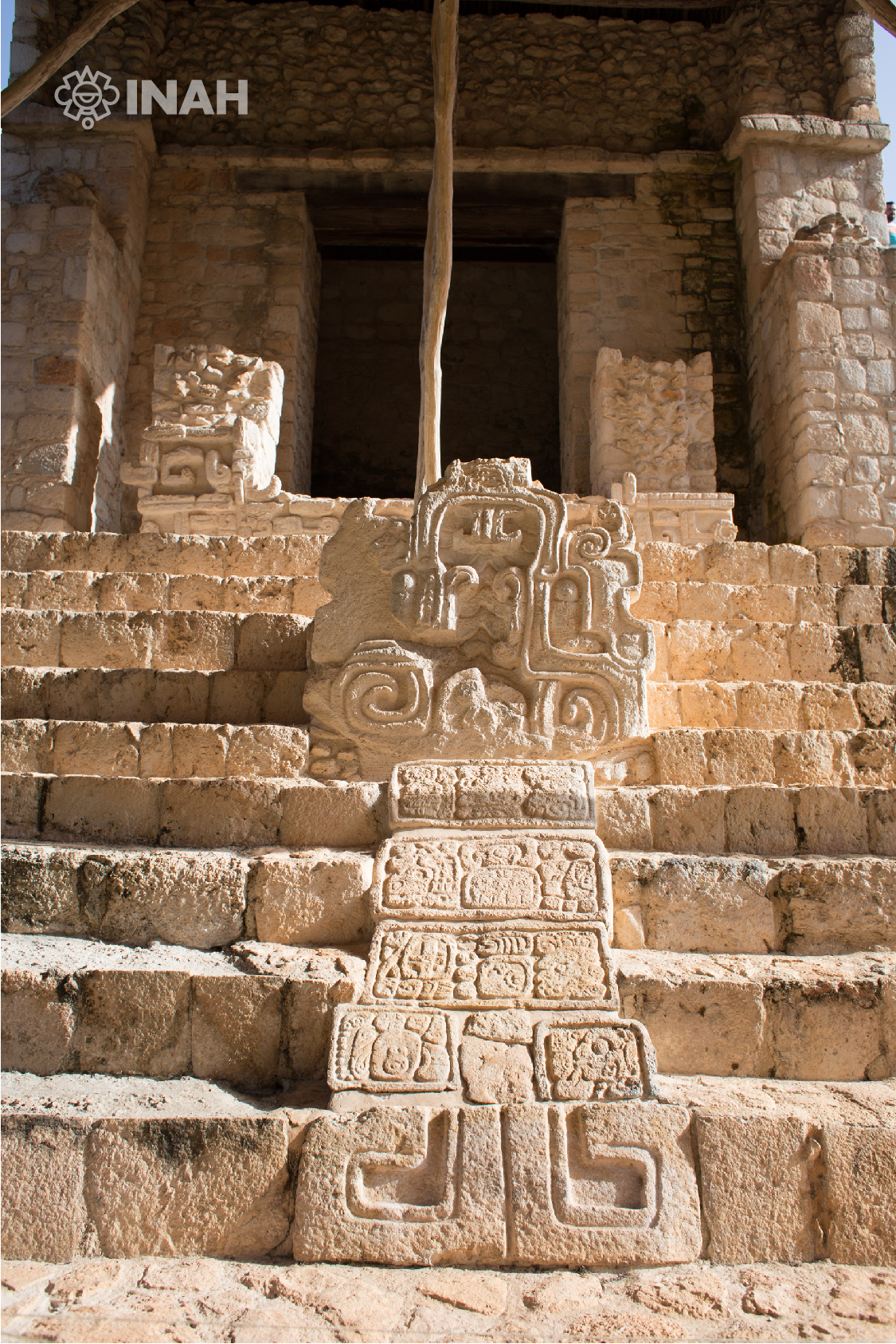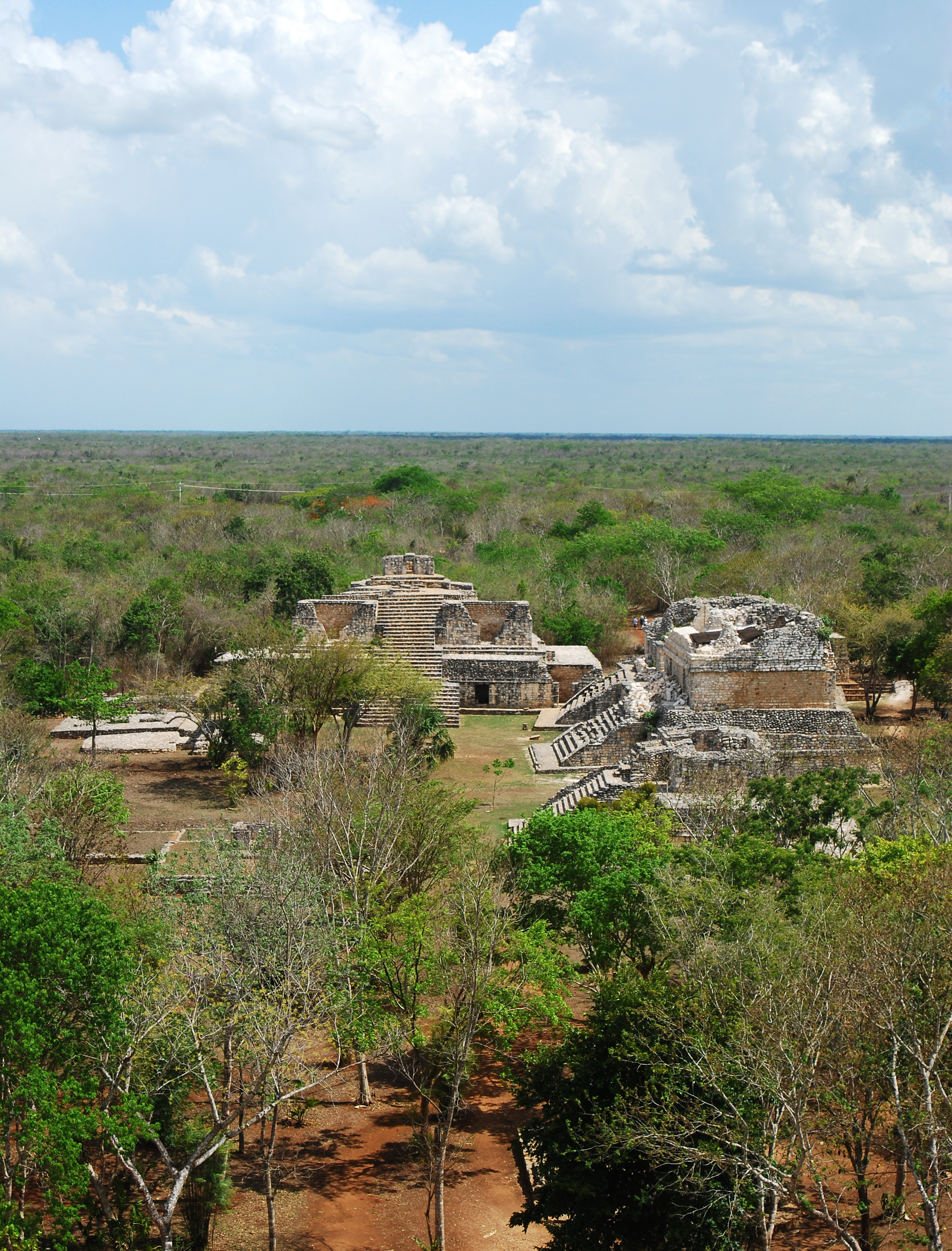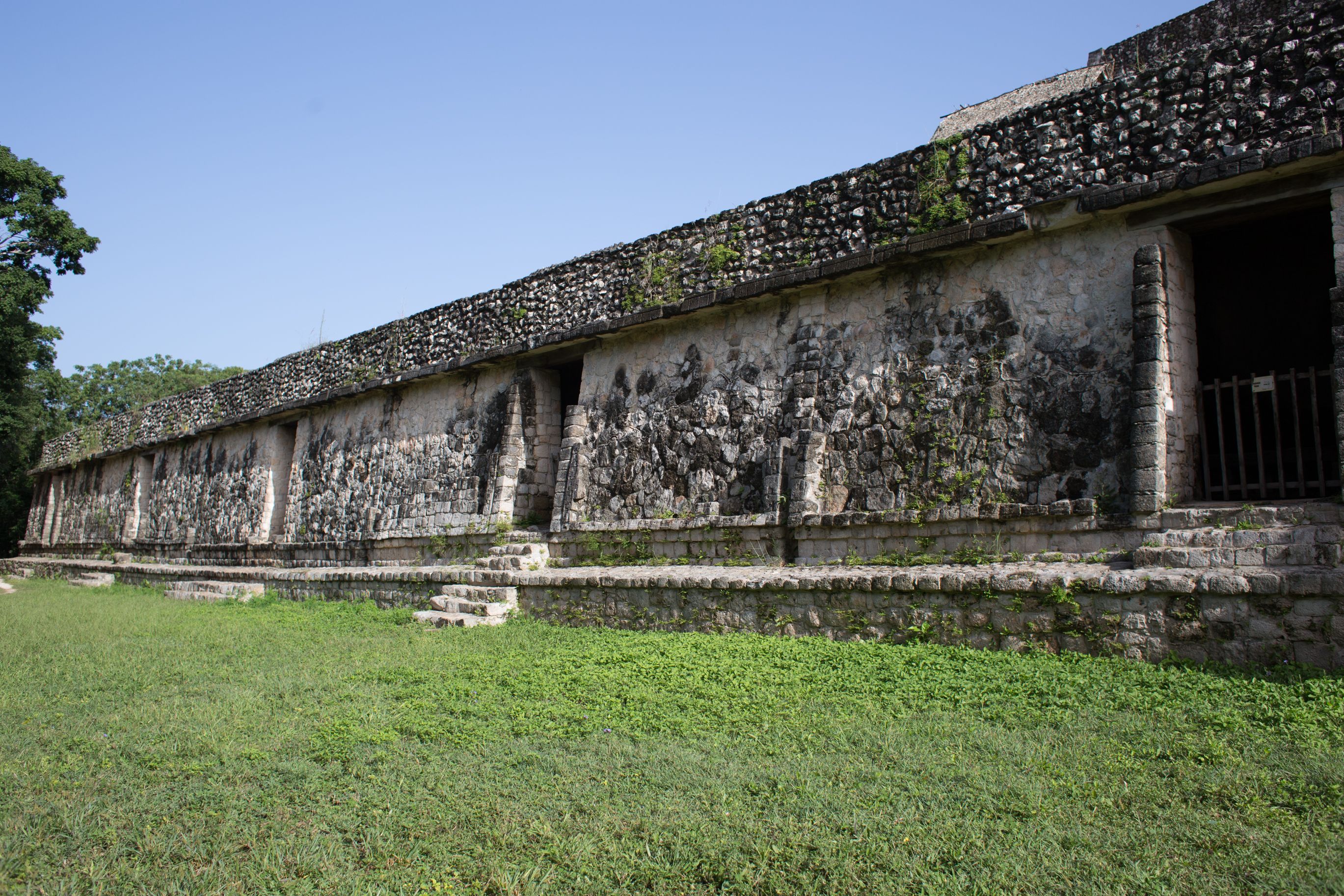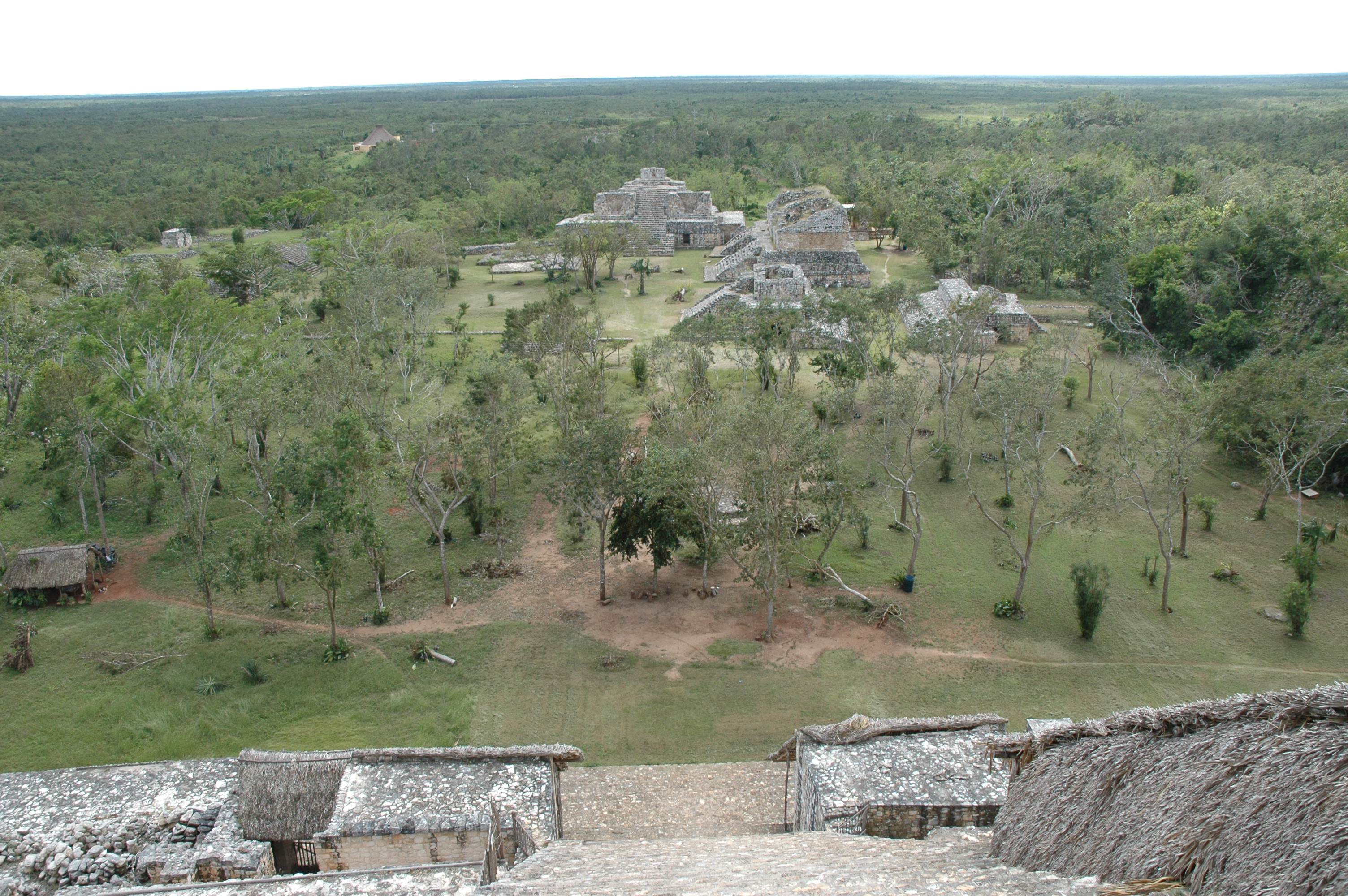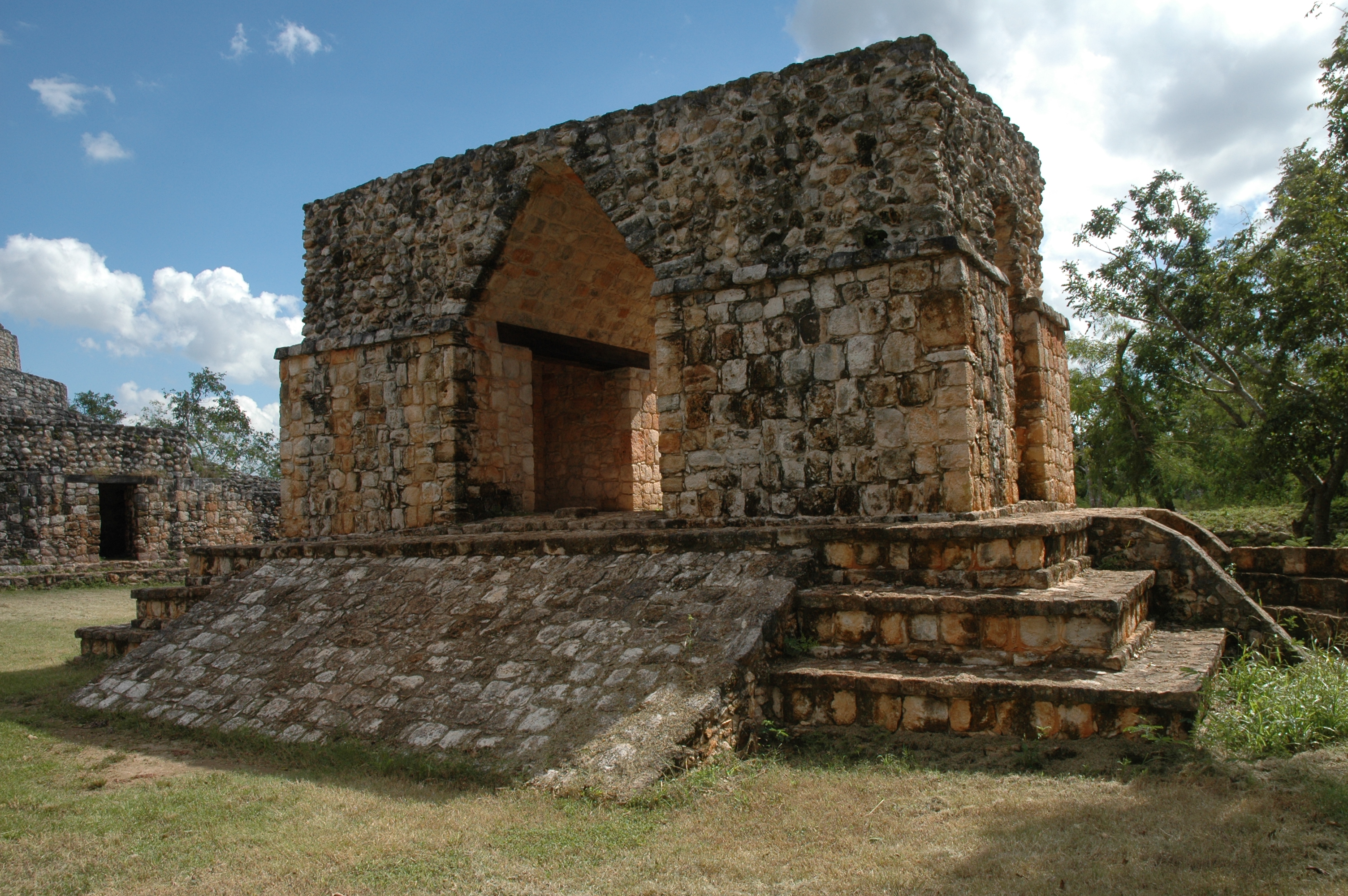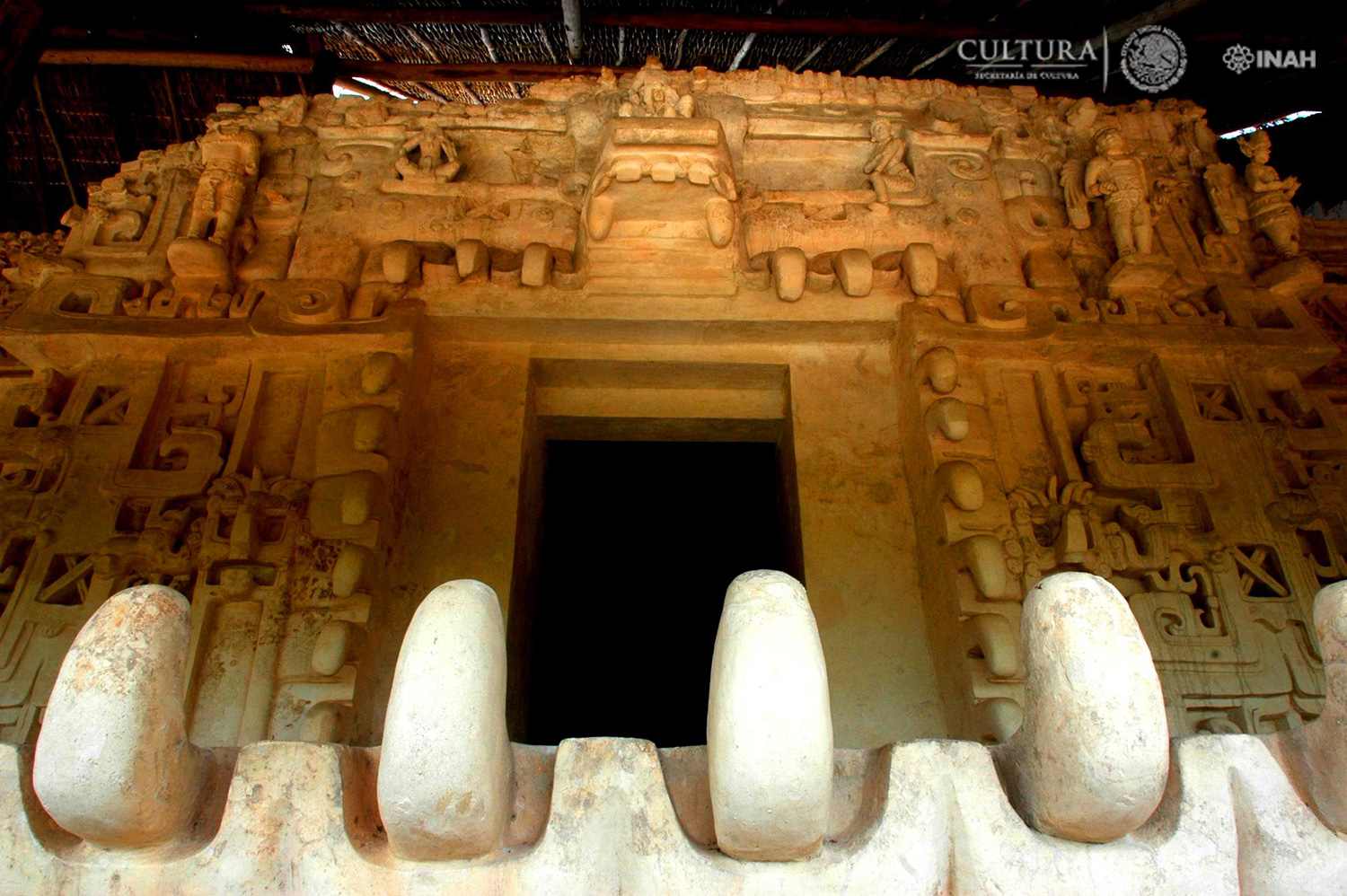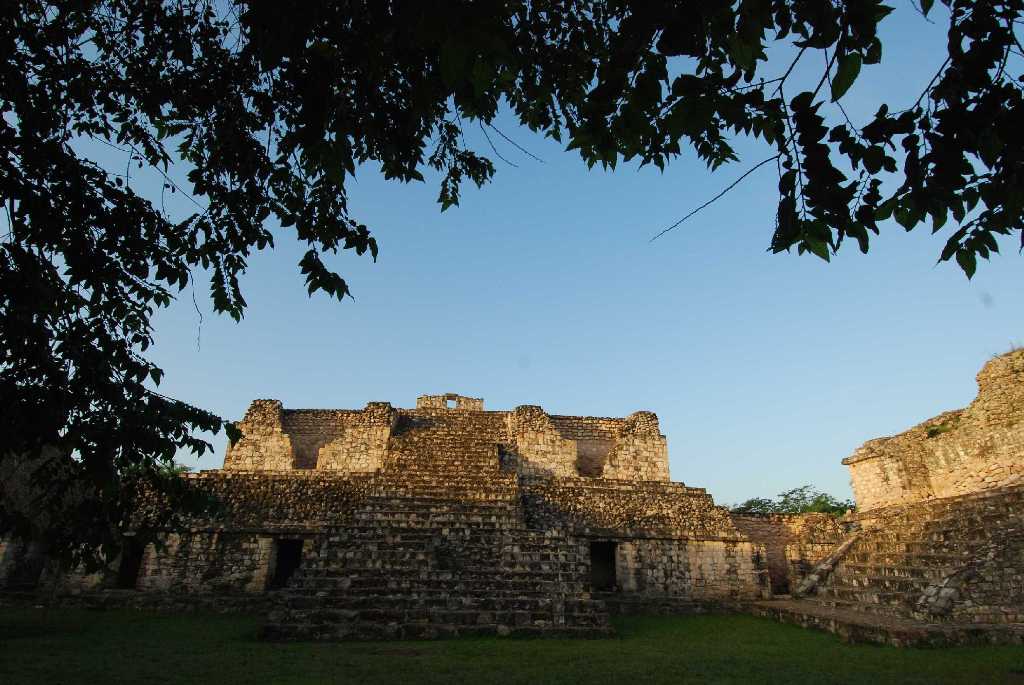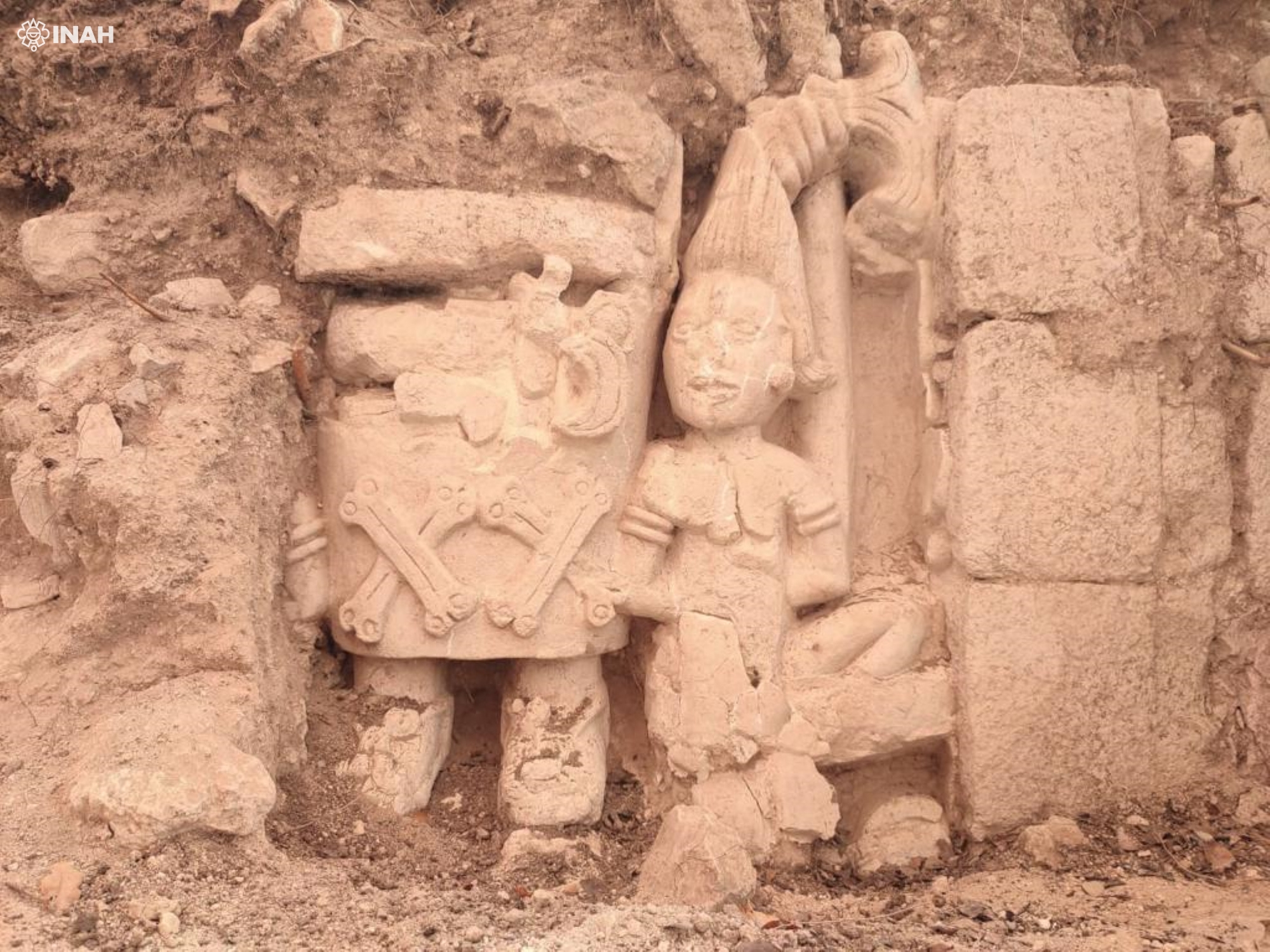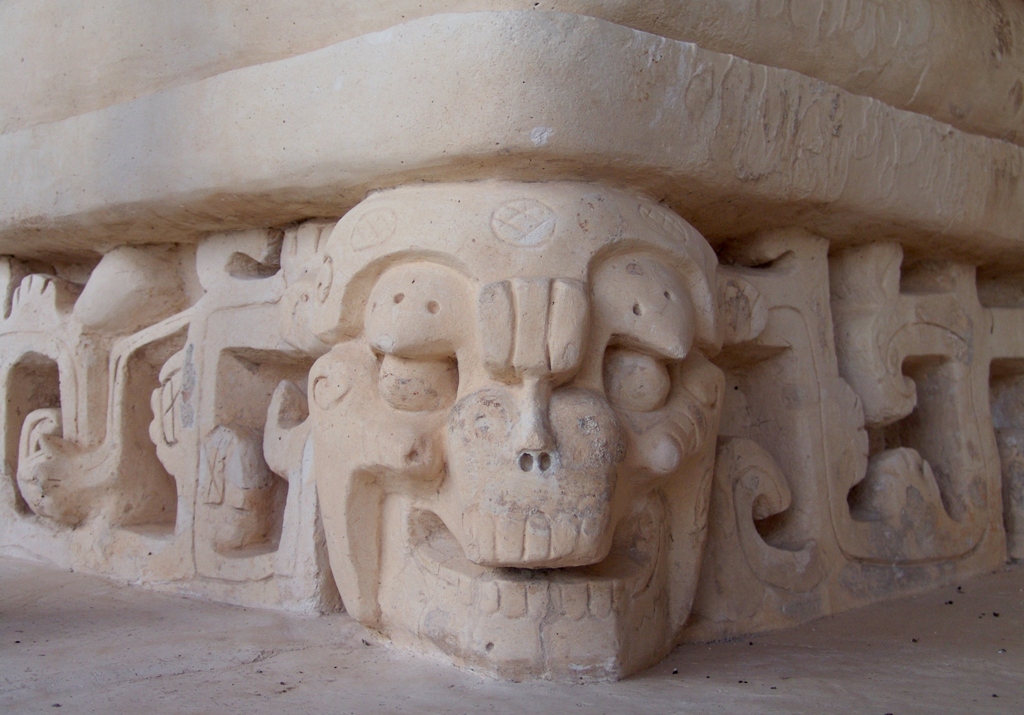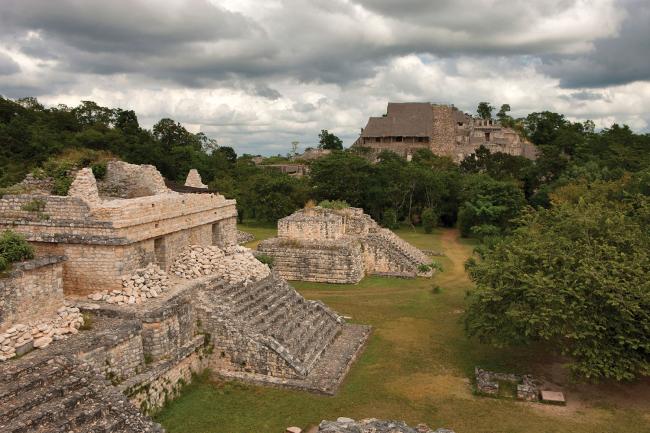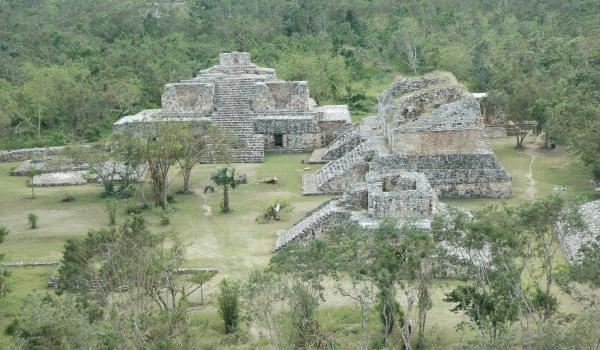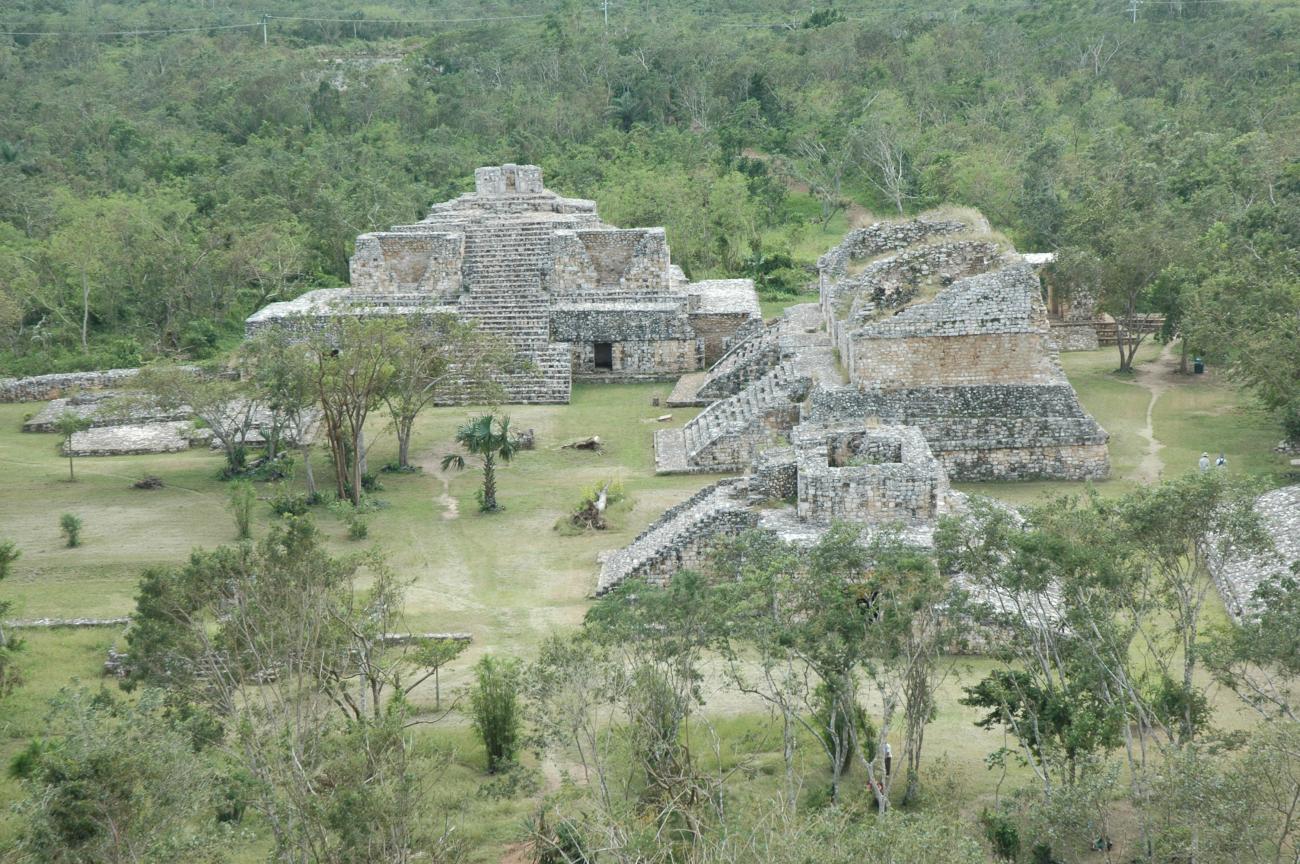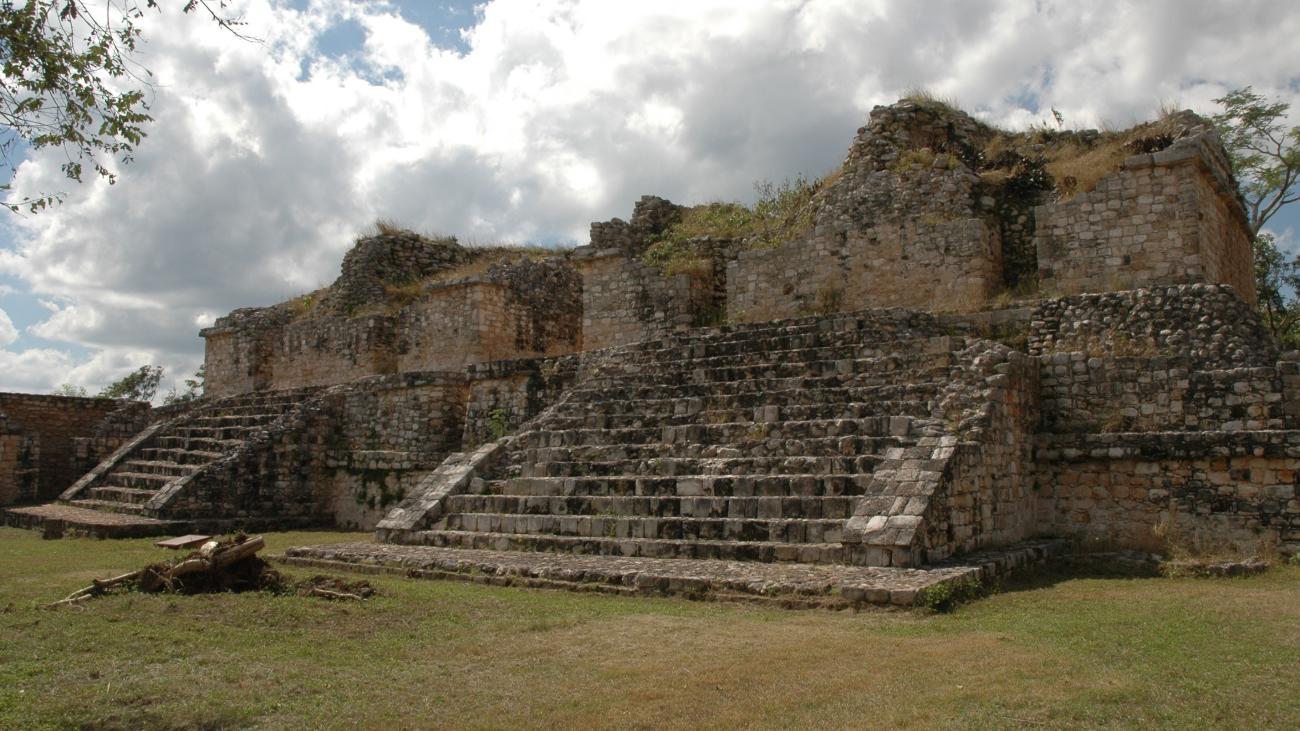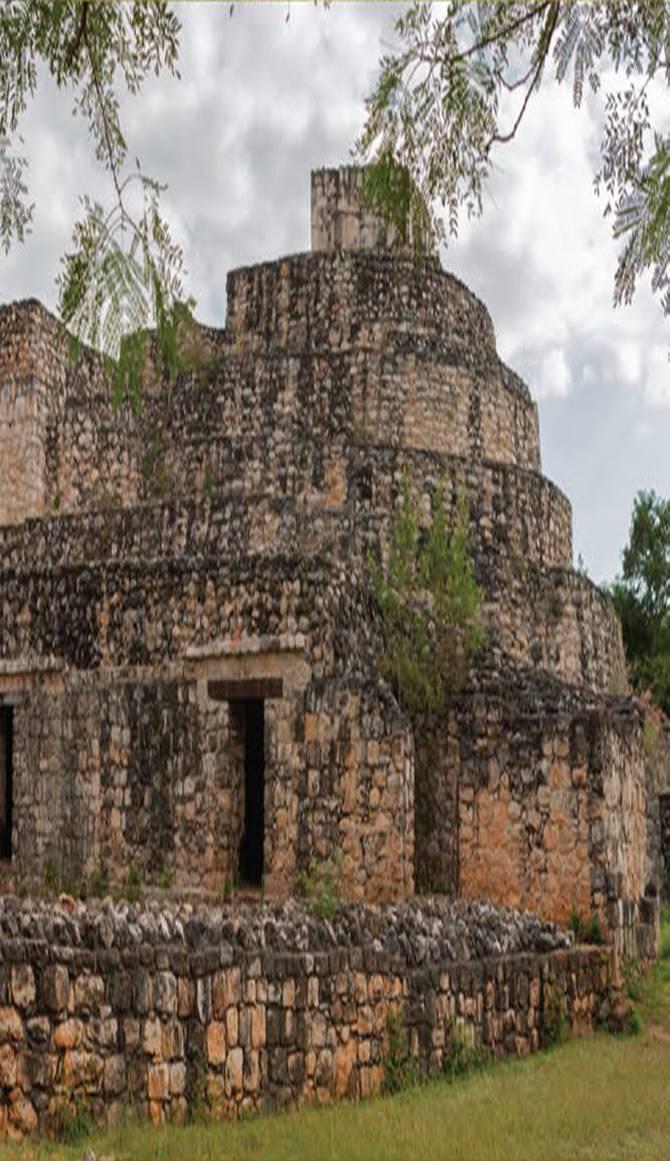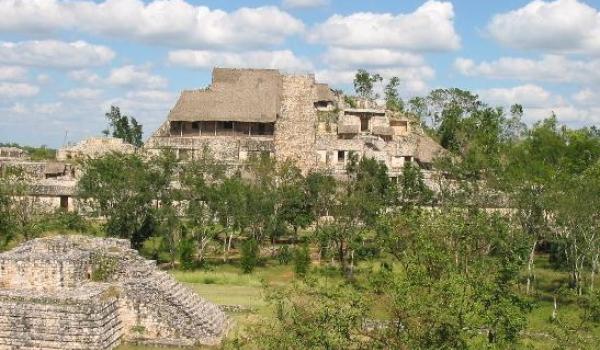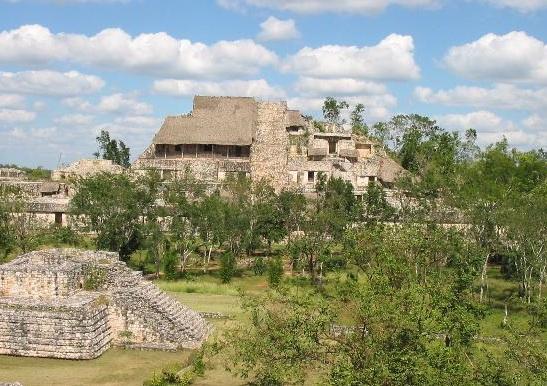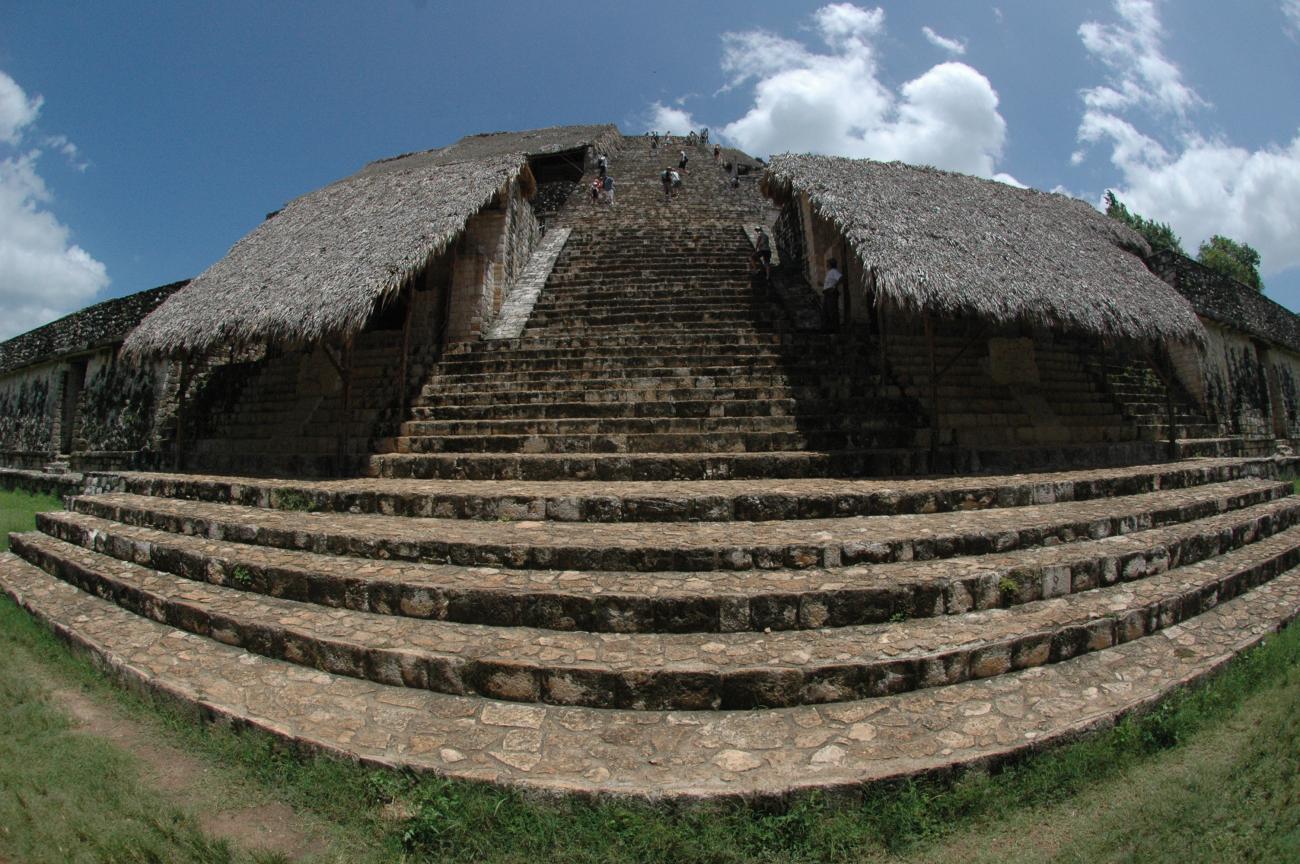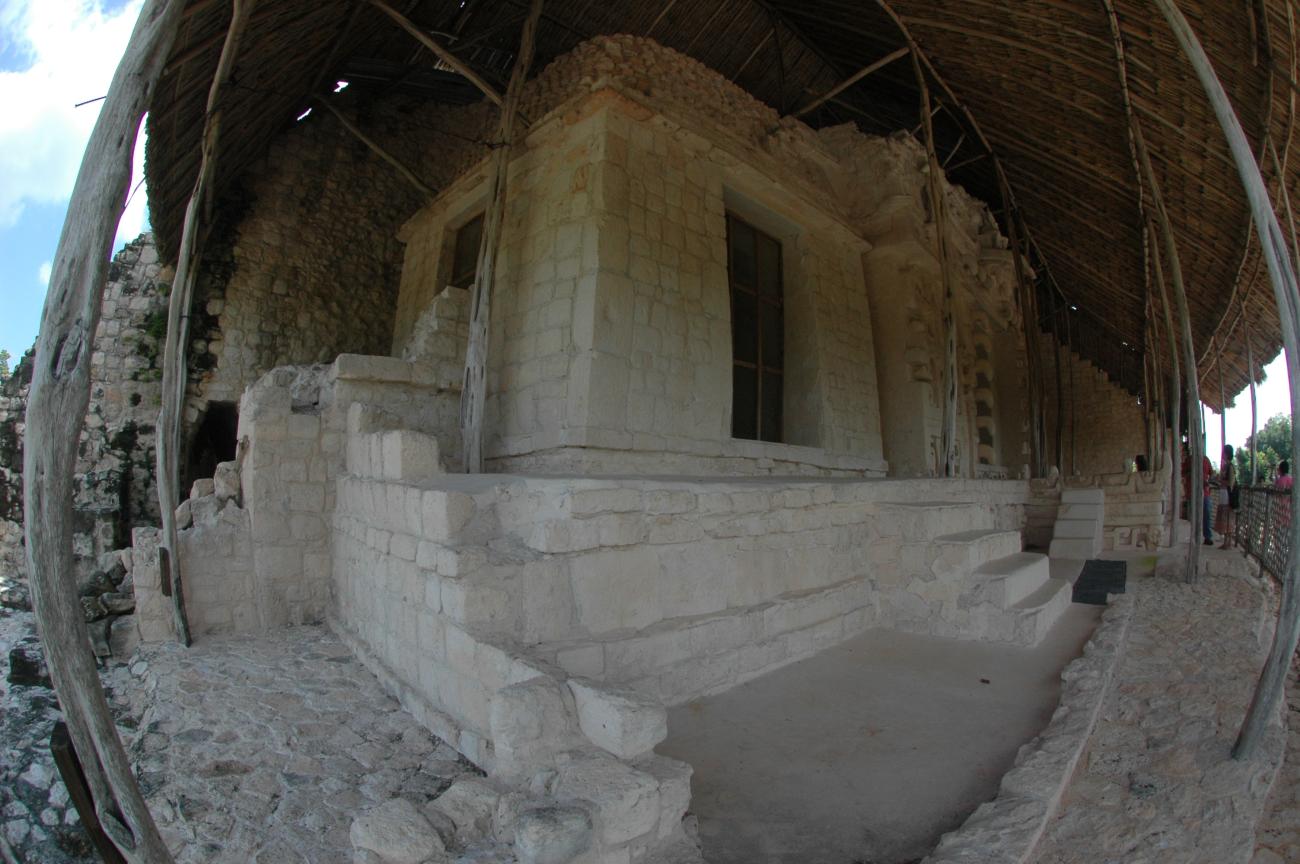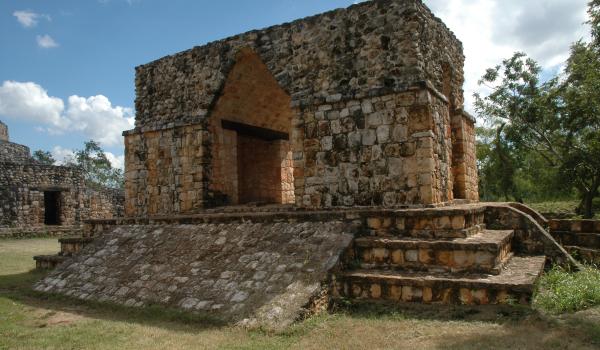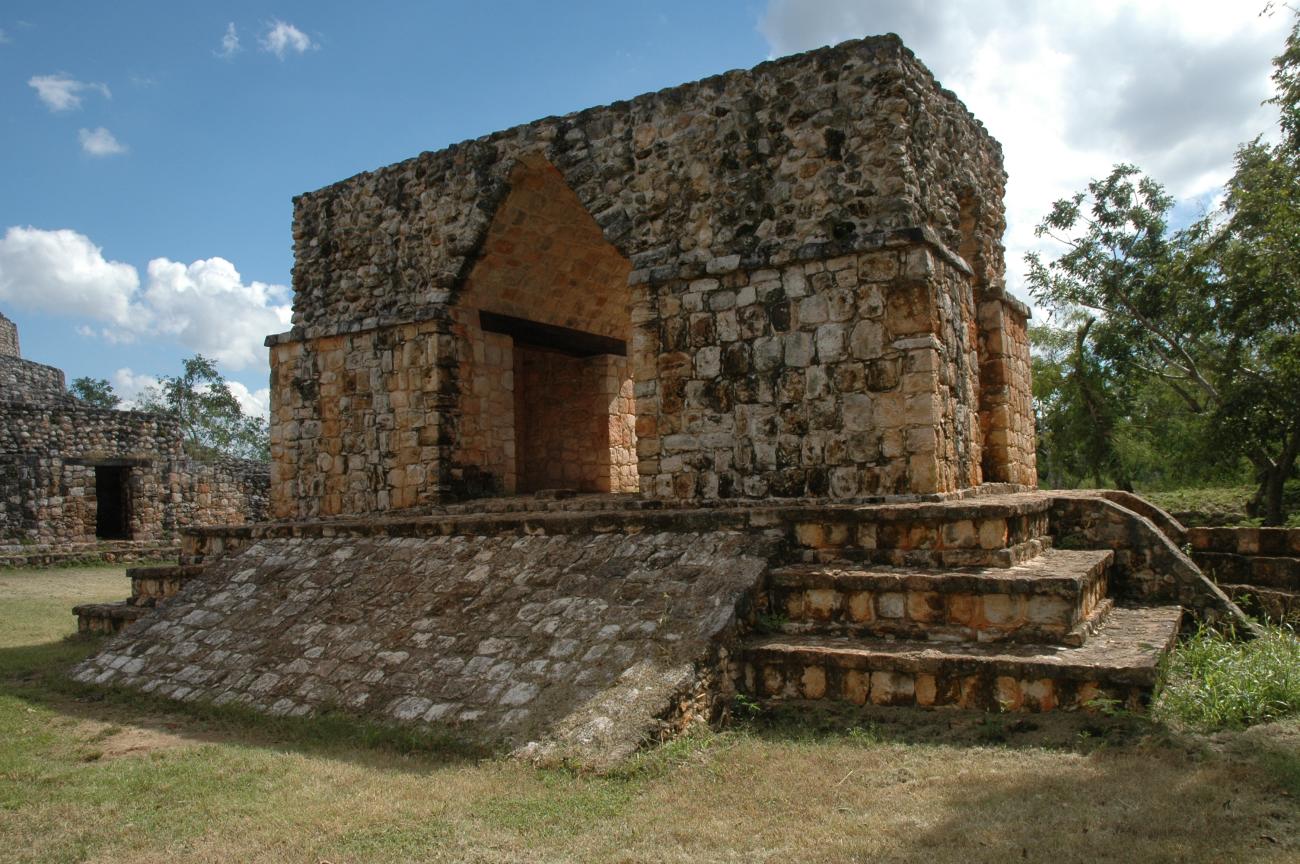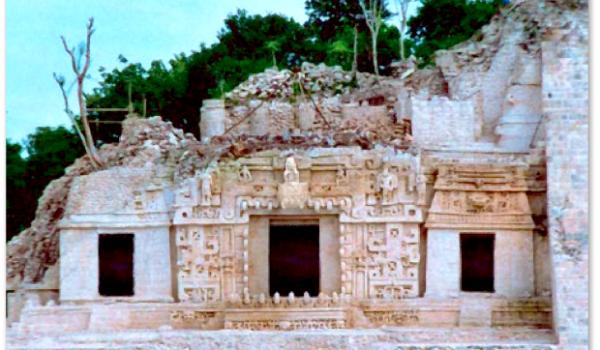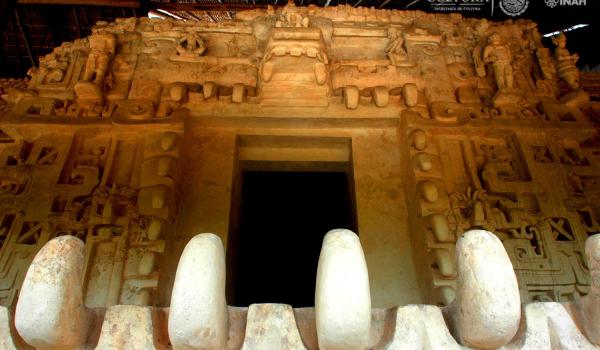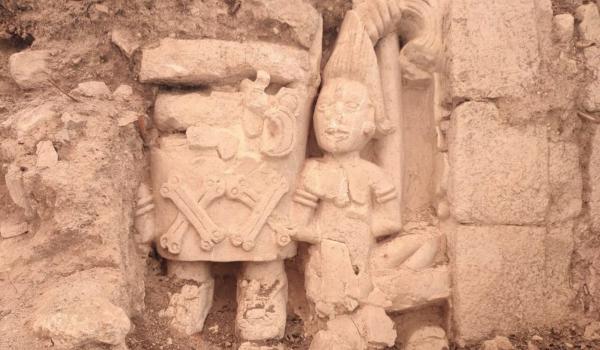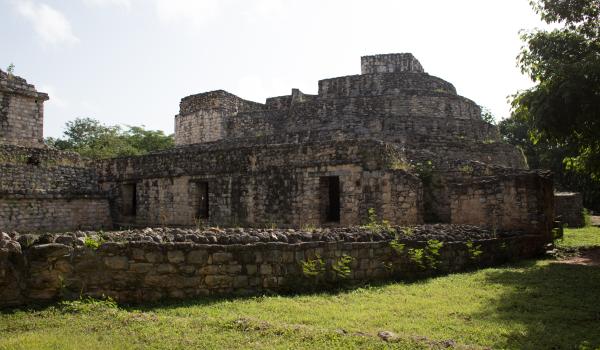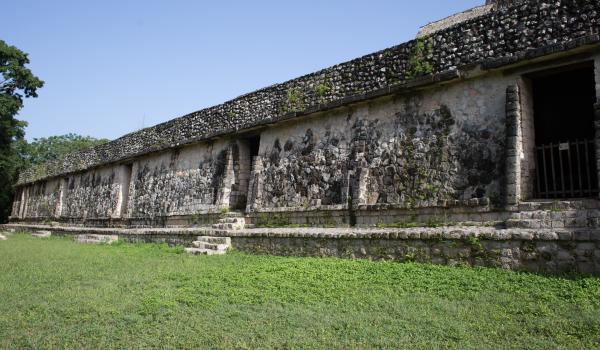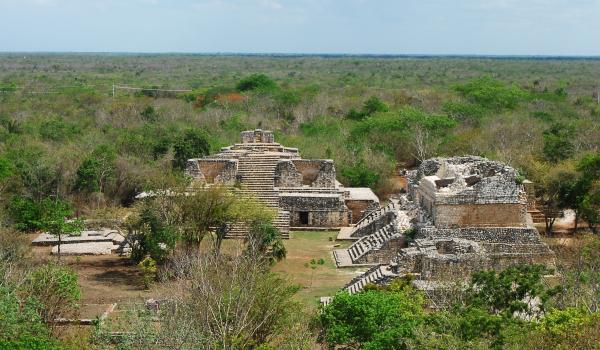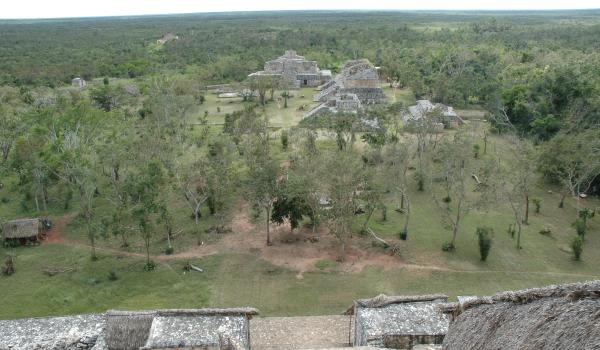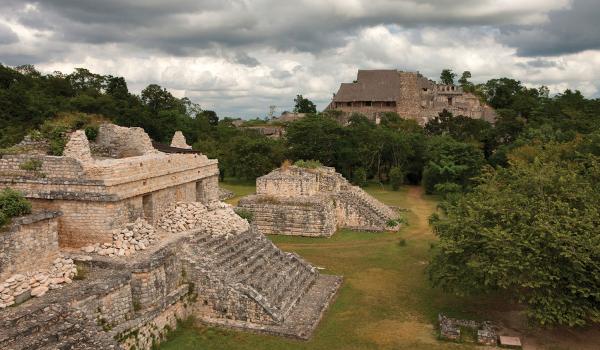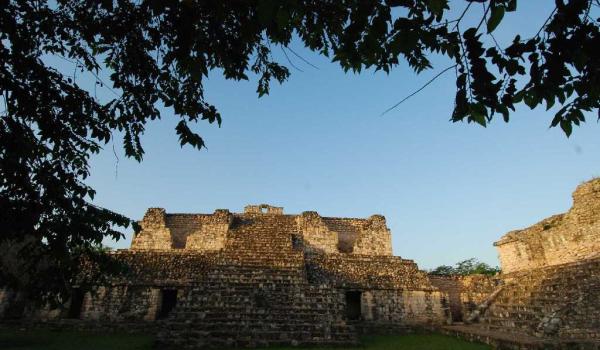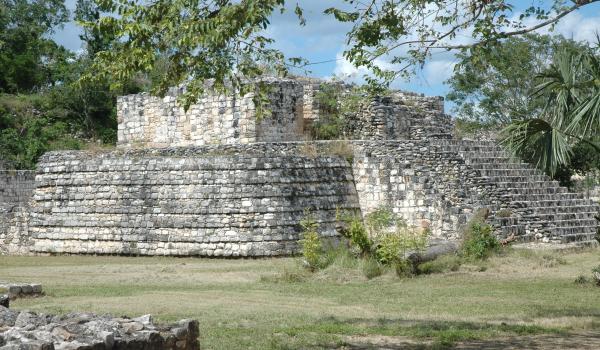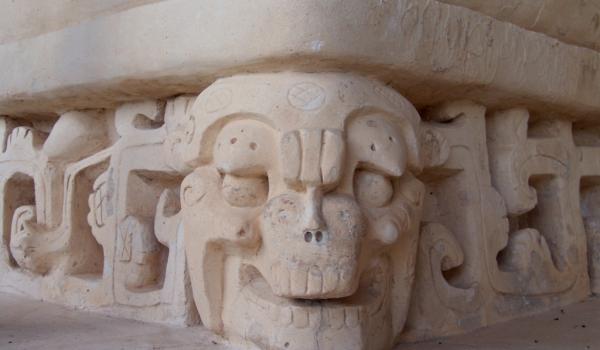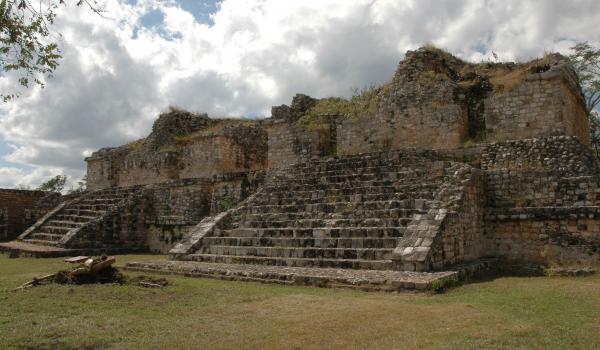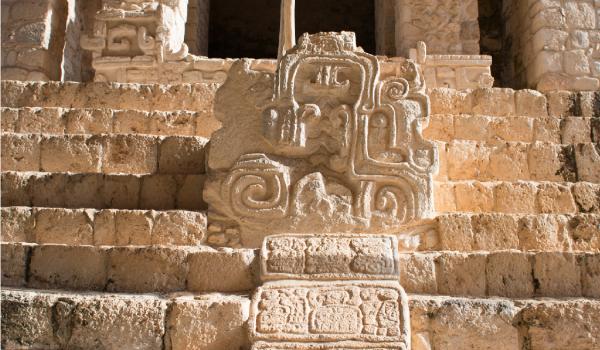Ek’ Balam was established in the Middle Preclassic between 300 BC and 300 AD, and it remained inhabited until the arrival of the Spanish, reaching its peak during the Late Classic from 770 to 896. It covered an extensive area of land and had classic Mayan features. It shared common characteristics with the most outstanding sites, for example it had three murals, five sacbeob (Mayan roads), carved stelae and a ballcourt. The kingdom of Talol became very powerful under king Ukit Kan Lek Tok’, and to a lesser extent under his successors to the throne. The governors and the elite of the city of Ek’ Balam flaunted colossal and magnificent architectural works, sculptures, paintings and luxury objects created on their behalf by the best master architects, sculptors, painter-scribes and all types of craftsmen. The kingdom of Talol was a fiefdom maintained by force of arms, which exploited the labor and resources of the settlements under its dominion, since its own population was not large enough to have built its great works, which included the royal palace known today as the Acropolis, with its singularly massive dimensions, complex architectural layout, and numerous areas recording the story of the king and his successors in paintings and reliefs, on a variety of surfaces. Apart from the artistic value of Ek’ Balam’s features, the historical value of the information found—and which is still being discovered—is vital, since it has filled a big gap in the archeological record for the northeastern part of the peninsula. The kingdom of Talol had a strong influence on neighboring sites, even on Chichen Itza, which in its early stages of development adopted the techniques and materials used at Ek’ Balam for mural paintings and stucco sculpture, as well as its early ceramics, all of which possess clear features first developed at Ek' Balam.
Ek' Balam, like all of Mexico's archaeological, historical, and paleontological heritage, is considered property of the nation according to the law (Constitution of 1917 of the United Mexican States). Like other sites, it is under the custody of the National Institute of Anthropology and History (INAH). The INAH was created through the Organic Law in 1939 (03-02-1939, reformed on 01-13-1986), and it is a decentralized federal body, under the Ministry of Culture, with its own status and patrimony. Its responsibilities include historical and anthropological research, conservation, restoration, protection, valuation and dissemination of cultural heritage and other activities within its competence. These functions are also dictated by the Federal Law of Archeological, Artistic and Historic Sites and Monuments, which was enacted in 1972 (06-05-1972, and amended on 13-01-1986).
Within the scope of INAH, Ek' Balam is one of 39,084 sites registered with INAH, and one of 182 that are open to public visitation. The Public Register of Archaeological and Historic Monuments was created by the 1972 Law, in its article 21, and the site was registered in 1986 as part of the Yucatan Archaeological Atlas Project (Garza Tarazona de González and Kurjack Bacso 1980; Velázquez Morlet, 1988:72). Ek' Balam has not yet been declared by presidential decree as an Archaeological Monument Site as are 46 sites in Mexico (including Chichén Itzá, Edzná and Uxmal, among many others), nor has it been inscribed on the UNESCO World Heritage List. Nevertheless, INAH has the responsibility to ensure its legal and technical protection, conserve and preserve it as the nation's cultural heritage (Meehan and Alonso 2010).




